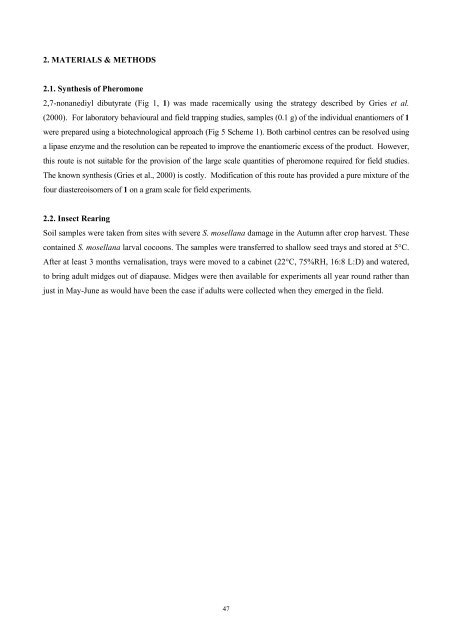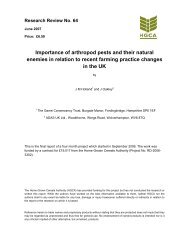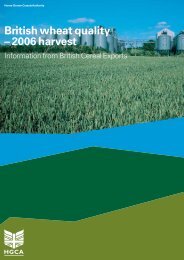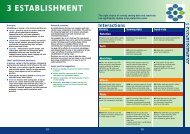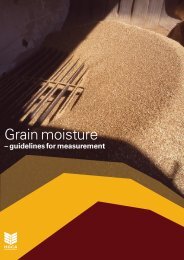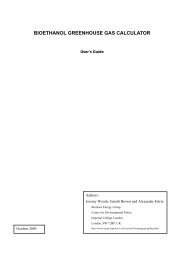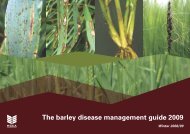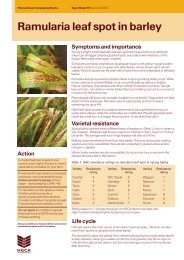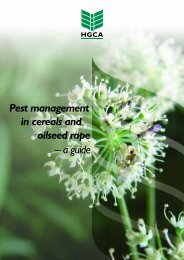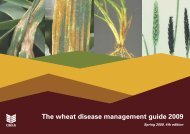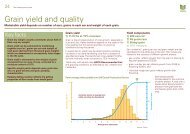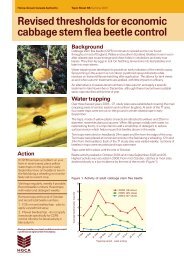Integrated control of wheat blossom midge - HGCA
Integrated control of wheat blossom midge - HGCA
Integrated control of wheat blossom midge - HGCA
Create successful ePaper yourself
Turn your PDF publications into a flip-book with our unique Google optimized e-Paper software.
2. MATERIALS & METHODS2.1. Synthesis <strong>of</strong> Pheromone2,7-nonanediyl dibutyrate (Fig 1, 1) was made racemically using the strategy described by Gries et al.(2000). For laboratory behavioural and field trapping studies, samples (0.1 g) <strong>of</strong> the individual enantiomers <strong>of</strong> 1were prepared using a biotechnological approach (Fig 5 Scheme 1). Both carbinol centres can be resolved usinga lipase enzyme and the resolution can be repeated to improve the enantiomeric excess <strong>of</strong> the product. However,this route is not suitable for the provision <strong>of</strong> the large scale quantities <strong>of</strong> pheromone required for field studies.The known synthesis (Gries et al., 2000) is costly. Modification <strong>of</strong> this route has provided a pure mixture <strong>of</strong> thefour diastereoisomers <strong>of</strong> 1 on a gram scale for field experiments.2.2. Insect RearingSoil samples were taken from sites with severe S. mosellana damage in the Autumn after crop harvest. Thesecontained S. mosellana larval cocoons. The samples were transferred to shallow seed trays and stored at 5°C.After at least 3 months vernalisation, trays were moved to a cabinet (22°C, 75%RH, 16:8 L:D) and watered,to bring adult <strong>midge</strong>s out <strong>of</strong> diapause. Midges were then available for experiments all year round rather thanjust in May-June as would have been the case if adults were collected when they emerged in the field.47


